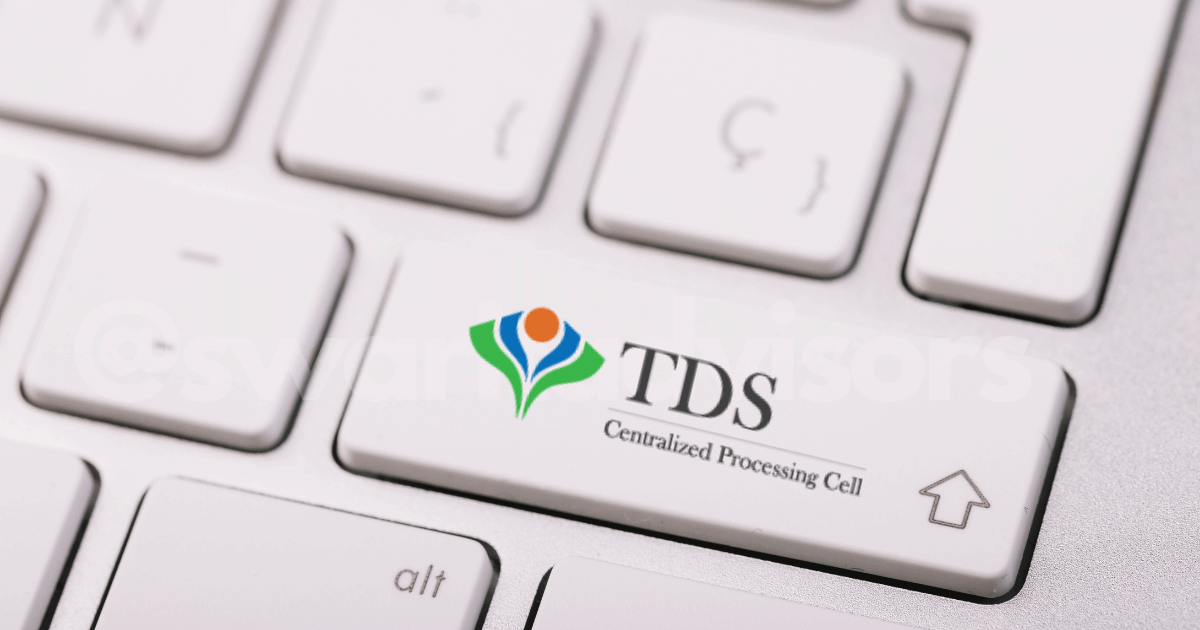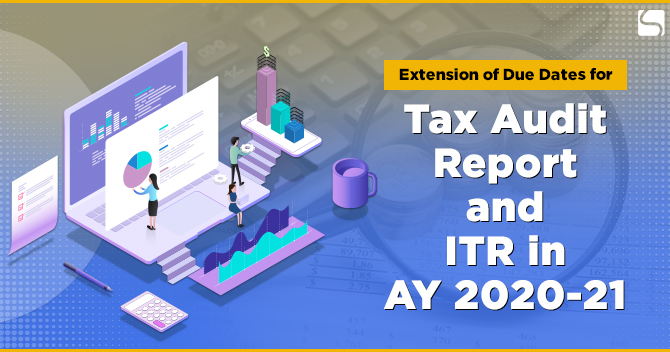CBDT Clarifies Provisions Regarding TDS Deduction from Salaries for F.Y. 2020-21

Shivani Jain | Updated: Dec 09, 2020 | Category: Income Tax, News
Recently, CBDT (Central Bureau of Direct Taxes) by way of Circular No: 20/ 2020, issued on 03.12.2020, has clarified provisions regarding the “TDS Deduction from Salaries for the Financial Year 2020 – 2021”.
Further, such a circular was passed in furtherance to Circular No: 4/2020, issued on 16.01.2020, which dealt with the Rates concerning TDS Deduction from salaries under section 192 of the Income Tax Act 1961.
In this blog, we will discuss in brief the clarifications made by CBDT regarding the new TDS Deduction from Salaries rates, which will be applicable on salaries from the Financial Year 2020 – 2021, together with other issues taken into consideration.
Table of Contents
Concept of Tax Deducted at Source
The term Tax Deducted at Source or TDS denotes the amount deducted by the payer prior to paying the salary to the payee. Further, it is a type of Direct Tax and is levied on dividends, incomes, rents, interests payments received from the bank, sale of assets, etc.
Moreover, the provisions of TDS or Tax Deducted at Source are governed by the Central Board of Direct Taxes and regulated under the framework of the Income Tax Act 1961.
Specifically, section 194 IA, 194 IB, 194 IC of the Income Tax Act 1961 regulates the TDS to be deducted on sale of goods. However, section 302 of the act, deals with the TDS charged on dividends. Lastly, TDS is a form of Advance Tax, whose returns are filed by the assessee in every quarter.
Who are all Eligible for Circular No 20/2020?
Every person who needs to pay an amount as the income earned by the assessee can deduct tax chargeable under the head “Salaries” on the said income earned for the Financial Year 2020 – 2021.
How is TDS calculated on the Salary?
As per the provision of the Income Tax Act 1961[1], TDS is calculated on the basis of the salary tax slab in which an employee falls. That means no tax will be levied if the estimated salary (inclusive of perquisites) of an employee does not exceed the normal tax slabs or the new Tax Regime under section 115BAC.
The Formula of Calculating Salary for deducting TDS:
Salary = Basic Salary + Perquisites
However, if in case an employee receives a salary from more than one employer, then, in that case, the said employee needs to furnish the details of the present employer in writing, which shall again be verified by him/her, together with the other employer. Also, the present employer needs to deduct TDS on an aggregate basis.
Different Tax Slabs For Charging Tax Under The Salary Head
According to the provisions of the Finance Act 2020, the rates at which the tax will be charged for the financial year 2020 – 2021 are as follows:
Normal Rates of Income Tax
|
SI. No |
Total Income Earned |
Rate of Income Tax |
| 1 |
Where the Total Income earned does not exceed Rs 250000 |
Nil |
| 2 |
Where the Total Income earned exceeds the threshold of Rs 250000 but does not exceed Rs 500000 |
5% of the amount by which the total income earned exceeds Rs 250000 |
| 3 |
Where the Total Income exceeds Rs 500000 but does not exceed Rs 1000000 |
Rs 12500 plus 20% of the amount by which the total income exceeds Rs 500000 |
| 4 |
Where the Total Income exceeds Rs 1000000 |
Rs 112500 plus 30% of the amount by which the total income earned exceeds the threshold of Rs 1000000 |
When the Assessee is an Indian Resident, who is above the age of 60 years but below 80 years
|
SI No |
Total Income Earned |
Rate of Income Tax |
| 1 |
Where the Total Income Earned does not exceed Rs 300000 |
Nil |
| 2 |
Where the Total Income Earned exceeds Rs 300000 but does not exceed Rs 500000 |
5% of the amount by which the Total Income earned exceeds Rs 300000 |
| 3 |
Where the Total Income Earned exceeds Rs 500000 but does not exceed Rs 1000000 |
Rs 100001 plus 20% of the amount by which the Total Income Earned exceeds Rs 500000 |
| 4 |
Where the Total Income Earned exceeds Rs 1000000 |
Rs 110000 plus 30% of the total amount by which the total income earned exceeds Rs 1000000 |
When the Assessee is an Indian Resident, who is above the age of 80 years or more
|
SI No |
Total Income Earned |
Rate of Income Tax |
| 1 |
Where the Total Income Earned does not exceed Rs 500000 |
Nil |
| 2 |
Where the Total Income Earned exceeds Rs 500000 but does not exceed Rs 1000000 |
20% of the total amount by which the total income earned exceeds Rs 500000 |
| 3 |
Where the Total Income Earned exceeds Rs 1000000 |
Rs 100000 plus 30% of the amount by which the total income earned exceeds Rs 1000000 |
Clarifications Regarding Arrears in Circular No 20/2020
With regard to arrears, the employee is eligible to claim relief, under section 89 of the IT Act. Further, for claiming relief the employer needs to provide details in Form 10E, which shall be duly verified by him.
Clarifications Regarding Losses Incurred Under Any Head
If in case a loss has been incurred under any head (other than the House Property), the same will not be considered by DDO for the calculation of TDS.
However, if in case the loss has been incurred from the House Property up to Rs 2 lakhs, then the DDO will need to file the declaration, together with the computation of loss.
Other Clarifications Made in Circular No 20/2020
With respect to the persons authorised to deduct tax, CBDT has provided clarifications regarding the provisions concerning the following in Circular No 20/ 2020:
- Deduction of Tax at Lower Rates;
- Deposit of the Tax Deducted at Source;
- Due Dates for paying TDS;
- Modes of paying TDS;
- Compulsory Filing of the Statement by PAO or Treasure Officer;
- Payment of Income Tax by Challan;
- Payment of Interest;
- Penalty and Prosecution;
- Failure to Deposit TDS;
- Furnishing of TDS Certificate;
- Mandatory quoting of PAN or Aadhar Number;
- The compulsory requirement to furnish PAN;
- TDS on Income generated by way of Pension;
- Matters concerning TDS made in the case of Non-Resident;
Conclusion
In a nutshell, CBDT (Central Bureau of Direct Taxes) by way of Circular No: 20/ 2020, issued on 03.12.2020, has clarified the new TDS Deduction from Salaries rates, which will be applicable on salaries from the Financial Year 2020 – 2021.
Also, all the clarifications made are in consonance with the provisions of the Income Tax Act 1961 and Income Tax Rules 1962.
For any other doubt or perplexity, reach out to Swarit Advisors, our proficient tax consultants will assist you with all the clarification made in the circular, together with the process of filing Income Tax Return.
Also, Read: Extension of Due Dates for Filing GST Annual Return by CBIC













